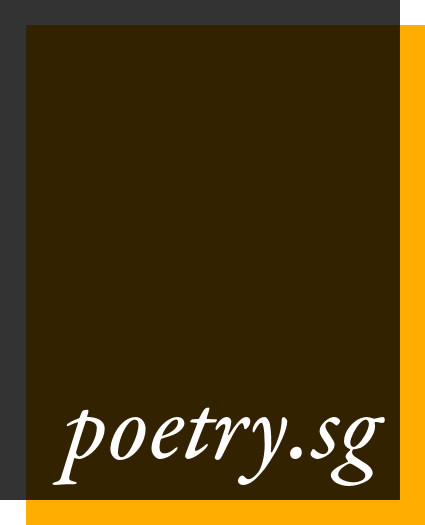Angeline Yap (b. 1959)
CRITICAL INTRODUCTION
Angeline Yap: Hearing by Looking
Written by Tse Hao Guang
Dated 25 Sep 2016
I want to discuss a specific aspect of Angeline Yap’s poetics—the vexed relationship between sight and sound. In many poems her speakers blind and silence themselves in order to perceive a deeper presence; at the same time, poetry is inescapably sensuous. Yap’s speakers gesture towards an impossible ideal, one that, it seems, they go on striving towards anyhow.
Her first book, Collected Poems (1986), provides little evidence of this later concern. Nonetheless, “Newel of a Stair (Haiku)” might be a beginning:
Newel of a stair,
Your emptiness is central
And extends. (30)
Here, the primary tension is between the “emptiness” of the newel, and it providing structure to the winding stair. The image of the newel is both all-encompassing and ghostly, flickering in and out of existence in the mind’s eye. This tension carries over into poetry itself, suggesting that all words hang on this nothingness. The final “And extends” contradicts the shortening of the haiku’s five syllable line. Sight and sound come up short in this poem, both unreliable, their unreliability the basis of poetry.
Further ruptures of sight and sound occur in closing my eyes to listen (2011). “ting 聽 (listen)” is a poem on the visuality of that Chinese word, where sight plays an explicit role: “as if with all ten eyes united in one purpose” (16). This refers to the presence in the word of 十 (ten) and the radical 罒, which has no meaning alone but looks like an eye. Because the relationship between words and their meanings is largely arbitrary, even in Chinese, the 罒 radical becomes a way for Yap to playfully suggest harmony where none exists.
The central paradox remains. We are asked to pay attention to what a word looks like, in order to achieve a deeper understanding of listening. “see how the ear stands sentinel,” the poem begins. Possibly the deeper understanding is moral, that in order to listen well, one must also look at the speaker, to pick up their body language. (This is the stereotypical interpretation.) Or it is physiological, that typically no sense functions in isolation from the other. I like to think it is also artistic, that the sound of the poem on the page must first be accessed through the eyes.
Yet, much is made, beginning in the title of the book, about how it is important to close your eyes in order to hear (“Into silence,” “closing my eyes to listen,” “silence”). “closing my eyes to listen” is the most interesting of the three examples. Although the speaker has closed her eyes, she still sees “behind my eyelids, a little bowl,” and also perceives “the light from a single candle” (13). Perhaps complete blindness was never the aim, or is impossible despite the aim, which suggests that complete listening isn’t, either.
Then the speaker “become[s] that bowl”:
-its shape
-its emptiness
-its quiet brown simplicity
While again signaling a return to sight, it also recalls the emptiness of the newel, and of meditation. Miriam Lo suggests that Yap “approaches Christianity by way of Zen Buddhism” (QLRS). In “There is a crowd in my head” parts i and ii, the speaker is a vessel filled with worldly cares and tasks that needs to be emptied by God (8, 43). In “into silence (ii),” Jesus is also emptied out, in kenosis, renouncing divinity “to enter truth (to let it enter you)” (33). Crucially, emptying is not for its own sake, but in order to be filled with “truth”. It seems the inability to be perfectly empty distinguishes Zen and Christianity for Yap.
Yap’s speakers want to be empty in order to find God, but they cannot but speak, and see and hear the world. The promise of the title is fulfilled only if the reader stops. Humanity is imperfect. Sight and sound, sources of both distraction and contemplation, are inextricably bound together. Lo calls this “Yap’s use of synaesthesia” (QLRS). If anything maybe this is the paradox of poetry also, especially the classical Japanese variety Yap seems to admire—reducing to say more.
Works cited
Lo, Miriam. “All Ears”. Quarterly Literary Review Singapore 11.1. (2012). Web.
Yap, Angeline. Collected Poems. Singapore: Dept. of English Language and Literature, National University of Singapore, 1986.
—. closing my eyes to listen. Singapore: Landmark Books, 2011.


